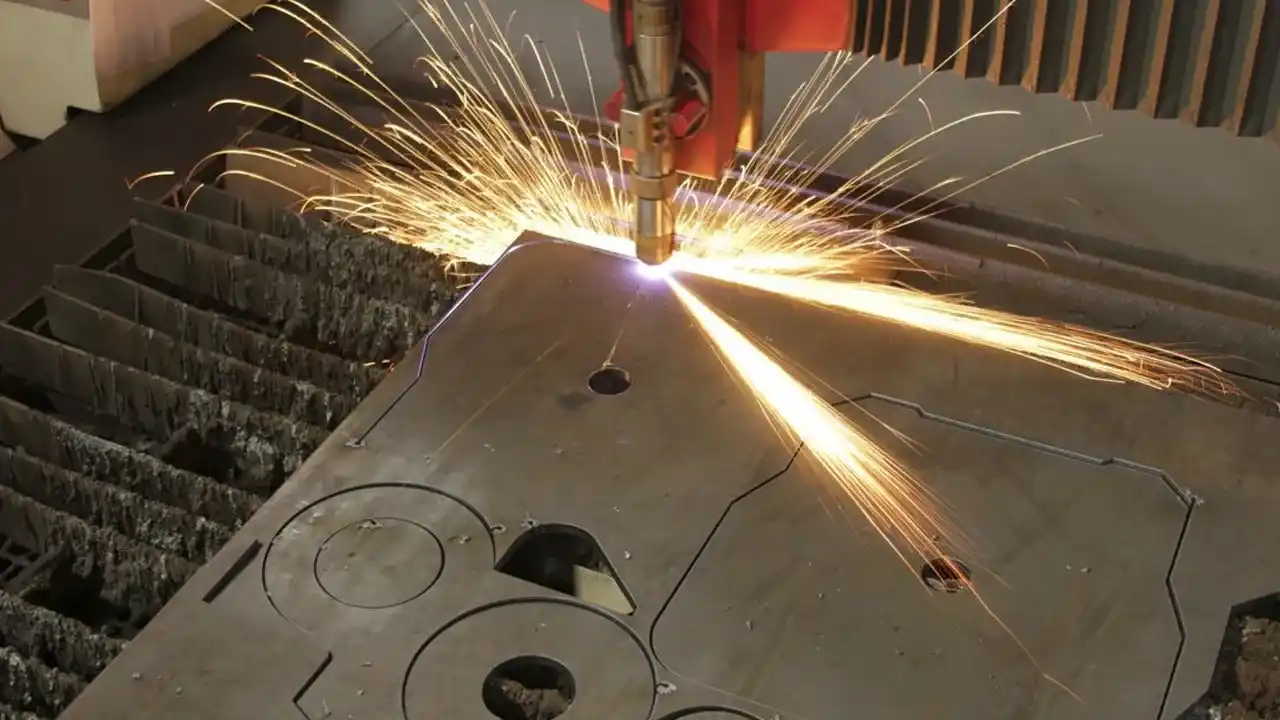
In laser cutting machines, precision and accuracy are crucial for achieving high-quality results. Various factors influence the precision and accuracy of cuts, making it essential to understand and consider them carefully. From the type of laser used to the quality of materials and the skill of the operator, each aspect plays a role in determining the final outcome. This blog explores the key factors that impact precision and accuracy in laser cutting, providing valuable insights for businesses and individuals looking to achieve superior cutting results in their projects.
Importance of Precision and Accuracy in Laser Cutting Applications

In laser cutting applications, precision and accuracy are of paramount importance, particularly in industries where stringent tolerances and exacting dimensions are critical. High levels of precision and accuracy ensure consistent and reliable results, enabling the production of intricate designs, complex shapes, and components with precise specifications. Whether it's in the aerospace industry, where even the slightest deviation can have severe consequences, or in the medical device manufacturing sector, where tight tolerances are essential for proper functioning and patient safety, laser cutting precision and accuracy are non-negotiable.
Factors that Influence Precision and Accuracy

- • Achieving optimal precision and accuracy in laser cutting is a multifaceted endeavor, influenced by several key factors.
- • The laser source itself plays a crucial role, as a stable and high-quality laser beam is essential for consistent and accurate cutting.
- • Factors such as the laser's wavelength, power, and beam quality can significantly impact the cutting process's precision and accuracy.
- • Additionally, the quality of the optics in the laser cutting system, including lenses, mirrors, and beam delivery components, is critical.
- • Well-maintained and precisely aligned optics ensure that the laser beam is focused and directed accurately, minimizing deviations and aberrations.
- • The cutting software and programming are also important factors influencing precision and accuracy.
- • Advanced software algorithms and precise motion control systems are necessary to translate digital designs into accurate physical cuts.
- • Furthermore, the properties of the material being processed, such as its composition, thickness, and surface characteristics, can affect the laser's interaction with the material and the resulting cut quality.
Tips and Practices for Achieving High Levels of Precision and Accuracy

- • To achieve high levels of precision and accuracy in laser cutting machines, it is essential to follow best practices and implement a comprehensive approach.
- • Proper system setup is the foundation, ensuring that all components are correctly aligned and calibrated according to manufacturer specifications.
- • Regular maintenance and calibration routines are crucial to maintain optimal system performance and prevent drift or deviations over time.
- • Optimizing cutting parameters for specific materials is another key consideration.
- • Parameters such as laser power, cutting speed, assist gas pressure, and focal position must be carefully adjusted to account for the unique characteristics of each material.
- • Utilizing high-quality consumables, such as precision-engineered nozzles and lenses, can also contribute to enhanced accuracy and precision.
- • Implementing robust quality control measures, such as regular inspections and dimensional verifications, is essential for identifying and addressing any deviations or issues promptly.
- • Additionally, leveraging advanced software tools, such as nesting and path optimization algorithms, can help maximize material utilization and ensure precise cutting paths.
Role of Calibration, Maintenance, and Operator Skills

- • Regular calibration of the laser cutting system is a critical aspect of maintaining precision and accuracy.
- • Calibration ensures that the beam positioning and alignment are accurate, preventing any drift or deviations that could compromise the cutting quality.
- • Periodic calibration routines should be established based on the manufacturer's recommendations and the specific application requirements.
- • Proper maintenance is equally crucial for sustaining high levels of precision and accuracy.
- • This includes cleaning optics to remove any accumulated debris or contaminants that could affect beam quality, as well as replacing worn components, such as nozzles or lenses, that may have degraded over time.
- • Neglecting maintenance can lead to gradual performance degradation, resulting in decreased precision and accuracy.
- • Operator skills and training also play a vital role in achieving consistent and accurate laser cutting results.
- • Well-trained operators understand the nuances of the system, can properly set up and calibrate the equipment, and have the expertise to monitor the cutting process and make necessary adjustments when required.
- • Continuous training and skill development for operators can help minimize human errors and ensure that the laser cutting system operates at its full potential.
- • By addressing these critical factors, including the laser source, optics, software, material properties, proper setup, maintenance, calibration, quality control, and operator skills, businesses and individuals can achieve exceptional levels of precision and accuracy in their laser cutting applications, meeting the most stringent tolerances and quality standards.
Conclusion
In conclusion, achieving precision and accuracy in laser cutting machines is essential for high-quality results in various industries. By focusing on key factors such as laser source, optics, software, and material properties, businesses and individuals can ensure superior cutting performance. Regular maintenance, proper calibration, and skilled operators are crucial for maintaining precision over time. For those in UAE, selecting laser cutting machine suppliers and manufacturers with a reputation for quality can significantly impact the success of your projects. Whether you need industrial laser cutting machines or the best laser cutting machine for your specific needs, understanding these factors will help you achieve the best results.
Want to read more about machine maintenance and specific applications? Read our blogs "Applications of Laser Cutting Machines Across Industries"
